
Rob Deans
-
Posts
99 -
Joined
-
Last visited
Posts posted by Rob Deans
-
-
Rob,
Thanks! I get the 64 PE (8 x 8), but could you please explain a) the horizontal and vertical exterior numbering, as well as
 why the decimal numeric values inside each PE box seem so low, relative to 100? Or do they in fact add up instead to 1?
why the decimal numeric values inside each PE box seem so low, relative to 100? Or do they in fact add up instead to 1? Regards,
John Kettler
John,
The exterior numbering refers to the percentage (in decimal, of course) of rounds that will fall in that "row" or "column".... The interior numbers refer to the percentage (again, in decimal) that will fall in that "box". It should be read as follows:
1. Take the box (PE) in the top right.
2. Now, in that "column", 2 % of the rounds will land (from the top to the bottom, ie all of the 8 PEs that make up that column);
3. Now read from the values on the exterior right of the diagram. The corresponding value to the top right box is 2% (.02); therefore
4. Read the value for the box as "2% of 2%" or .04% (.0004, the value in the box)
You can apply the formula to any box by reading "X% of Y%". ie the box that is immediately upper right of centre is "25% of 25%" or 6.25% (.0625, the value in the box)
So, yes, the whole system is perentage based. As it is presented, the whole equals "1" or 100%
Here is a diagram showing the whole theory from beginning to end with examples as the game SHOULD be. A 100 round shoot and the dimensions involved,
At the time of the last discussion, this is what a given mortar was shooting,
This is what it should have been shooting...
Regards,
Rob
-
Correct me if I'm wrong, but doesn't that show a 25% chance of rounds landing within the centre 4 boxes? Your original table said 11 rounds before a hit to target centre?
So it seems pretty reasonable if you'd gone to the trouble of wheeling up a 240mm howitzer to fire on a hard bunker, that you could spend maybe a day and 10-20 rounds to kill it.
Not precision fire, granted, but pretty plausible.
You are correct as the scenario goes. Some key points about though that may not necessarily relate to shooting at a bunker (depending on it's size).....
The target is 10 yds x 40 yds; and
The fire is delivered while the gun is in line with the long axis of the target (key point in this calculation).
As a point of clarification, the "Target Centre" referred to is not a "a round landing on target centre", but refers to "the number of rounds it will take to achieve a hit when the centre of the 100% zone is on the centre of the target. (vs on a point that is within 2 PE of the target centre,...... this is the second figure in the table in that column)
If the target is accross the line of fire (line Gun-Target or GT) then the odds go up greatly...
Indulge me in a quick explanation of the math...
The target here is 10 x 40 = 400 square yds.
This fits into the 50% zone (2 PE x 2PE) = 16 yds x 72 yds = 1152 (in this "50%" zone actually 25% of the rounds land)
400 is 35% of 1152....
35% of 25% is 8.75% chance of hitting the target
1/.0875 (the reciprocal) = 11.#$%&@*@ or 11 rounds.......
A bunker 10 yds by 10 yds = 100 square yds
or 8.7% of 1152 (the 50% zone)
8.7% of 25% = 2.175% chance hitting the target
1/.02175 = 46 rounds to hit.....
Complicated yes, but explainable....
Anyway, plauseable, but not quite "sniping".
Cheers,
Rob
-
Rob,
Going back to your original figures, at 18,000 yards, 1 PE = 8 yds in deflection and 36 yds in range. Referring to your gunnery table excerpt, the figures given there show the errors (note plural) eD and eR at that range to be 8 PEd x 36 PEr. That gives 64 yds in deflection and 1296 in range. Thus 64 x 1296 = 82,944 square yards. That's the 100% zone for the gun. I think.
By contrast, in your # 28, you said
"Here is some data that I gained from a US manual...... at a range of 18000 yds the PE for a 240mm howitzer firing this particular ammo (HE...) is 36yds x8yds.....
What this means is that a single weapon firing a given (say 100 rounds for theory sake) mission that is perfectly laid will have a beaten zone that is 8 x 36 = 288yds deep and 8 x8yds = 64 Yds wide....."
Either I'm not properly interpreting the gunnery table, or your figures are off because you misinterpreted the table. Which is it?
Hi there,
The table reads Probable Error for range in the second column and Probable Error for Deflection in the third... This refers to the size of one "Probable Error" at that range, with that ammo. As you can see, different weapons have differing degrees of "consistancy" with the 8 inch howitzer MkI being the most "consistant". There are 64 "probable errors" (8 x8) in a "100% Zone"..... I don't know where you understood the math that indicated that the probbable error for range was mutiplied by itself to be..... (giving the figure of 1296yds)... 8 x 36 =288. If you refer to the diagram I posted, it shows what this looks like on the ground (apply the dimensions of 8 yds for deflection and 36 yds for range to each of these little rectangles. Each of those rectangles will have a certain number of rounds within, with the highest number being within those that are closest to the centre, according to this table
.. I do believe, that you are interpreting the table incorrectly.
Regards,
Rob
-
JonS,
Yes you are correct..... The 100% zone (or in layman's terms, the beaten zone, the area where all the rounds land) at that range, with that ammunition, is as stated....8 x PEr by 8 x PEd. You and I were both invovled in a conversation last year about this very topic... The weapon system was the mortar but the theory behind what we are talking about here is the same... Just the PEs change.....
John Kettler,
Yes, please do assume that the groggy math is correct...... Are you a gunner?
What's important to understand is that the PEs for range and bearing (deflection) are the BEST consistancy (the tightest pattern on the ground) that can be achieved vs the best accuracy (are the rounds on target) that can be achieved. The PEs are influenced by range, the trajectory and the ammunition fired. They are fact and the way to interperet the PEs is as I have shown... Whether there is an air OP or the FOO has xray vision matters only in placing the 100% zone (though in practice it is the 50% or the 82% zone) centred on the target. After that the inherent ability of that weapon to shoot consistantly will put the rounds on the ground according to the PE or larger but not smaller....
If there needs to be more explanation I still have all the diagrams and the like to demonstrate..... They look like this,....
Cheers,
Rob
Rob
-
YankeeDog,
Destruction of a tough pillbox or bunker would typically be done using a single howitzer for precision fire. Where a 100 meter bracket was good enough for FFE for field artillery, this was a matter of progressively walking the shells onto the target, with the goal of demolishing it, or at least crippling it with Fuze, Delay shells.
Regards,
John Kettler
Hi there,
I know that this particular post was a while ago but I thought that I might make a comment....
Here is some data that I gained from a US manual...... at a range of 18000 yds the PE for a 240mm howitzer firing this particular ammo (HE...) is 36yds x8yds.....
What this means is that a single wepaon firing a given (say 100 rounds for theory sake) mission that is perfectly laid will have a beaten zone that is 8 x 36 = 288yds deep and 8 x8yds = 64 Yds wide.....
Just wanted to respond to the "precision fire" comment above. Now maybe it was intended in the above comment that these point targets were to be engaged using direct fire,.....
Anyway, my figures would be smaller if the range was shorter...... but certainly not able to hit a bunker without a hell of a lot of ammo......
Rob
-
Hello all,
Great additions of tests and the like, I must say.
I have seen posed the questions of the quality of troops etc affecting the dispersion of the fall of shot. When we are able to gain the PE data for a given range and a given round, the plotted rounds according to the 100% box percentages are the very best results that can be achieved. The groups shown at 850 are WAY too compact. The PE for the 60mm Mortar (best case - Charge 2) is 6 for deflection and 13 for range.
Here is the test group. I counted 352 craters...

Here are the PEs (albeit from the 60mm)

And here is the way the rounds should have landed...... They simply don't compare...


But if you turn the group on it side........
It is about 2 PE short by range and deflection in this configuration.... Could it be that BF got their axies mixed up??? Not quite the oval shape it should be but better than the sideways group that we've seen as a result of the tests...
If mortars are to be accurately protrayed in this game, there needs to be some work done here....... Then again, there has to be some willingness to do it too..... I, for one, hope so.
Rob
-
Here is my test with the PEs overlaid by grid. Generally the same as your Posel

Apart from the concentration being WAY too compact (as the numbers show), the most glaring thing is the shape of the group. That being sideways to what it should be.
Here is what it should look like

Food for thought, eh?
Rob
-
Hi all,
I wanted to add to the conversation a bit more with some clarification. It would seem that the definitions of the "zones" and the amount of rounds that land in them are a little wide of the mark... If I may walk through this by picture....
Here is the 100% box diagram with the associated percentages marked in each PE box (have to move the decimals over two first.)

Now, if we apply a 100 round shoot @ 400yds with a 60mm Mortar (with the data from the references) according to the 100% percent box we get this... (there are 100 dots there)

Important point here..... The so called 50% and 82% zones are marked here..... They do not reflect simply 50 and 82% of the rounds... They reflect 50% of 50% of the rounds (or 25 rounds) and 82% of 82% of the rounds (or 67-68 rounds) respectively. This is because the percentages are applied BOTH for range and deflection..... The numbers don't lie..... Count the dots...

So if we remove the lines we get something like this

and this (adjusted slightly for appearance)

Now compare this to the screen shot of the experimental in game shoot (albeit of an 81mm. I am trying to find PEs for the M43 HE round...) .... Much difference and the dimensions are way off... So you can't say that 50% of the rounds will land within 1 PE of the target.... A bit of a conundrum here as the American reference states this.... But the figures tell another story (and correctly I might add)
So as far as odds go, there is a 25% chance that a perfectly aimed round will land within 1 PE of the target and a 67% chance that a round will land within 2 PE of the target. You simply can't use yards (or metres) to express the distance away from the target the round will land (ie "within 8 yds of the target", because of the nature of the PE. The only way one can use this expression is if the PE for range and deflection are the same and then by definition, the grouping on the ground will be circular)
I hope that this lends some clarity to the situation. I must say that with the references and know-how on their application, one can answer the question definitvely as to the "accuracy" of the accuracy of the mortars in this fine game.
Rob
-
Hi everybody,
As this is a subject that is dear to my heart, I have followed this thread with interest. When the subject of "Probable Errors" came up I was most intrigued. I fear, however, that the term has been miss understood in this discussion. Please indulge me....
The mortar (or any indirect fire weapon) will simply not put all the rounds of a given mission on the same spot, not due to improper aiming (laying) but due to "mechanical" irregularities such as differences in propellant, irregularities in the barrel and small differences in weights and dimensions of the actual rounds to name a few. I state this only as a lead in to further explanation. The pattern that the rounds will land in will form an oval of varying dimensions based on range to impact (distance GT, or Gun-Target). More circular close in and stretching out to a long, (and relative to the length) slender oval at range. If a box is drawn around the complete beaten zone to encompass all fallen rounds it will, of course, give dimensions of width and length. It is these dimensions that form the basis of calculating the Probable Error or PE.
I won't go into more detail of ow the numbers are generated but in the reference below you can read to your hearts content. This "100 %" box is divided into 8 parts by length and by width giving 64 (total) "sub" boxes. The dimensions of each of these sub boxes is, of course, the same and they are the PE for range and deflection.
What does this mean for the game......? The figures that were quoted earlier for PE of the 60mm mortar...
To give a specific example:
400 yards
(Charge 1)
range: 8 yards
bearing: 4 yards
What this means is that at 400 yds on charge 1, ALL of the rounds in a given mission (and of course this is all based on best case firing conditions) will land in a box that is 64 yds long by 32 yds wide. Remember, that means it will miss the target by no more that 16 yds left or right and 32 yds plus or minus) Now, the concentration of these rounds will naturally be more tightly grouped towards the centre of the 100% box (or mean point of impact), in fact within the centre "4 PE x4 PE" box. In modern parlance this is known as the 82% zone and it is this "zone" that an observer would endeavor to "place" on the target through adjustment...
Here is an modern American reference that explains it in detail..... I think that it is important to remember that despite the modern age of the reference, the concept of PEs is old and the mention of PEs in 1944 (1951) refers to the same concept as today.
Some examples...
600 yds (from mortar to target) Ch 2 PEs are 10 yds for range and 6 yds for deflection. This gives a beaten zone (100% box) of 80 yds long and 64 yds wide with most of the rounds landing in a box 40 yds long and 32 yards wide.
200 yds (from mortar to target) Ch 0 - PEs are 5 yds for range and 2 yds for deflection. This gives a beaten zone (100% box) of 40 yds long and 16 yds wide with most of the rounds landing in a box 20 yds long by 8 yards wide.
Now this is a lot, I know, but with this data, we can say categorically if mortars are too accurate in this game.... Now all this data is based on real weapon performance but in perfect conditions with perfect aiming (laying). Battered sights, tired eyes, worn mortar tubes and the weather will all combine to give more error to the shooting.
Thanks for indulging me in my explanation and please ask any questions you like.
The references
For Theory of PEs - http://www.fas.org/man/dod-101/sys/land/docs/fm6-40-ch3.htm
For PE of the mortar - http://winslettwedding.com/FT%2060-L-1%20Firing%20Tables,%20Mortar,%20M19%20and%20M2.pdf
-
In Canada, the section is 10 men with seven in the dismounted section and a vehicle crew of 3. The vehicle is part of the section with the section commander getting out on the ground and the second in command staying in the vehicle as its commander. There have been differences in this setup with the commander staying in the vehcle and the 2ic on the ground......
-
Hello all,
I was wondering if there is any way to resupply any/all the weapons mounted on the vehicles.
I am playing a scenario with WMIKs and the like and the GMG ran out of ammo.... There comes with the platoon, a Land Rover full of 40mm ammo and I thought that maybe if I dismount the crew and sent them over to the supply veh they could bomb up.... Well they could do that just fine..... Only when they put that same weapon back on the WMIK all that ammo they got is not available..... So I dismounted the GMG and it worked just fine dismounted, only it couldn't use the same ammo when it was mounted....
The same issue happenned with a WMIK that ran out of 50cal ammo... Fine, I dismounted the crew and they took the GPMG..... It too was woefully short on ammo and they resupped in the same fashion....... Got back on the vehicle (and replaced the GPMG on the pintle at the front)....... No ammo avail..........
Now I can understand the 40mm ammo being of different natures (linked vs boxed), but 7.62 link is 7.62 link and it should be able to be used in any GPMG in any configuration......
Could something be done?
Could the Aquire feature be expanded to cover aquisitions between infantry units? This would round out this already great feature and make it truely comprehensive......
Thanks Rob
-
Hello all,
I was wondering if anybody else has experienced their screen flashing during gameplay. I'm no expert, it doesn't appear as though it is a frame rate issue but rather the whole or part of the screen flashes. It mats over the images on the screen but the play still carries on. I can get it to stop by clicking on various units or deselecting them, there doesn't appear as though there is "fix" this way.... Any help?
Thanks,
Rob
-
If those of you who are interested can get your hands on a copy of the film "Men Against Tanks" then it will answer all your questions. It is full of countless uses for the Tellermine in the hand held anti-tank mode. The movie is full of scene after scene of german infantrymen sprinting up to T34s and heaving mines on the back deck and the like. The shots are in German and they cover almost every conceivable way to take out tanks given the hand held infantry weapons of the day. Its a war time film and worth a look...
Rob
-
Where did you get these great graphics?
Rob Deans
-
So you think thus far Los has been talking out of his arse?
No, he knows what he is talking about. Some of the procedure he has outlined is not absolutely required but the meat and potatos are there.
Either a small mortar FO (2" for Brits, 60mm for US, I don't know what for Axis
Well I can speak for the 2". The weapon is not capable of indirest fire the same way that a mortar with a baseplate, bipod and sight is. If you've seen one, you'd understand why.
The reason why I asked about any direct experience with the mortars of the era is because I have the aquaintance of three mortarmen from the Second World War. They campaigned from Sicily right through to Holland, mortarmen all the way. They are a wealth of info on the subject, readily answer questions and are keen to pass on info about what they did.
Rob Deans
-
Does anybody have any first hand knowledge of the way mortars were used at this time? How about DIRECT, second hand info (from those that were there)?
Rob Deans
-
I haven't got the patch yet, but am I led to believe that Commonwealth HTs can't carry a full section anymore?
Thanks
Rob Deans
-
"The mortars are therefore able to be fired when mounted though typically they were emplaced"
Actually they could not be fired from the carrier. It was a special carrier fitted with racks to carry the components of the mortar at the back of the vehicle. Minor point....
Rob Deans
-
The thread on Infantry Guns got me thinking a bit more about the usage of both IGs and mortars. As it stands now indirect fire from on board mortars can be directed at a TRP or at a target in view of an HQ unit that is "commanding" the mortar. (Yes I state the obvious well). After much disscussion with some "old boys" who were in mortars during the war, it became clear that the weapons were controled by land line, 90% of the time. Rarely did they use wireless and just as rarely direct fire. My idea is that in the deployment phase, an HQ unit in command of the mortars may establish a land line link to a concentration of mortars. This would be a selection in the drop down menu, which, after it was selected would allow a "command" line to be drawn to the concentration of mortars. The distance could be limited to a tactical 200-300m (maximum). This would accuratly simulate the running of a telephone line back from the OP to the mortars. Once the OP or mortars moved, the link would be broken in much the same way as the current TRP capability is now. Very simple, the HQ unit would simply have a Command line back to the mortars as though they were ordinarily in command but this line would not change from HQ to HQ depending on which was closer as it does now. Again, not complicated, easily executed and the capabilities of the weapons reach that much closer to reality.
Thanks
Rob Deans
-
"....are GUNS, not HOWITZERS, which where made to fire in high angles."
Yes they were made to fire at high angles as mentioned by Michael and Claus I think.
"......regimental level, thereby falling perfectly into the 75mm or 150mm OBA spotter slot."
This is a good point. Yes they would. My arguement is that as mortars are available both on and off board, so should the IGs with the same "type" of indirect fire capability as the mortars when employed on board.
"....One thing though is that they lacked FO elements"
".......IG platoons, each with: Platoon Commander, 2ic, Simultainious positioning NCO, 2 directing NCO(I and II)....(there are the FO assets you mention as lacking)......., 1 rangetaker, 1 messenger, ..........3 telephonists and another messenger, who were equipped to set up fire control connections with telephones and signal flags."
Having IGs with the same type of capability as mortars (on board) would enhance this magnificent game. I just do not see the evidence as to the "time and scope barring IF" arguement. This is a weapon with similar (though not the same) characteristics as those of the mortars with the "benefit" of the option of a low trajectory. Treat them as such.
Thanks
Rob Deans
-
After reading the thread that was passed along one thing jumped to mind. The almost total lack of references as to the "primarily direct fire" use of the IGs. Almost all of the references are those that state evidence for indirect fire. Reading the thread I got the overwhelming feeling that the anti-indirect camp was arguing from preconceived notions and not willing or able to provide evidence of the direct fire "only" way of use. I don't understand why the IGs don't use a similar code to the mortars with the indirect fire routines of the IG following those of their high trajectory cousins.
As to the tank arguement, tanks can't elevate their guns to 70+ degrees and don't have the charge flexibility. So yes the ranges would be excessive.
Thanks
Rob Deans
[This message has been edited by Rob Deans (edited 09-30-2000).]
-
I realize that these have been subject of much conversation but text on these weapons is had to come by and I did so I'm passing it on. The reference is "The German Infantry Handbook" by Alex Buchner 1991. A translation from the German. All in all a fery good reference taking the Arm and describing it from the individual soldier, building into sections platoons companies and so on, adding appropriate weaponry and HQ descriptions at the varying levels. In the chapter on the "Infantry Regiment" it talks of both the lIG 18 and the sLG 33. I quote "since the (firing) postions were generally concealed, indirect firing was used" and "aiming was done with the ZE 34 panoramic telescope" (only used for indirect fire) The characteristics of the weapon give ranges with different charges (800m Ch1 to 3475m Ch5) similar to a mortar or howitzer. The orbat of the lIG platoon accounts for 2 directing NCOs and 3 linemen (signallers) The photographs that correspond to the text show indeed both a stand alone IG with its very distinctinve panoramic sight and one in action with the gun number who is laying peering though, yup you guessed it, his sight. All this combines as weighty evidence for indirect fire.
Now as I recall, the arguement was made against indirect fire due to lack of evidence and the thought that it would give an unfair advantage to the German having his own "artillery" When one considers the IGs to be "fancy and slightly more accurate mortars" why the aversion? Granted there is not a lot of evidence as it regards IGs however, direct fire "artillery", roled as such, went out in the Great War and it went out for a reason.
Thanks
Rob Deans
-
This point has been raised before, I know, but it really should be implemented for both computer and human. Simultainious, coordinated movement. As it stands units will move after the familiar 13 second (+ -) pause. After that the individual units' own speed takes over. There should be another choice in the interface which enables "coordinated movement" The selected group of units, if in command, will stay moving at the rate of the slowest unit through the terrain that is covered. A platoon advancing accross a field with a tank in intimate support, The company with an intimate support troop of tanks advancing on a hill. The arguement has been made that this is "too much control"....It simply isn't. Movement is coordinated like this all the time. The platoon commander ensures that his sections do not get misaligned (within reason) and the section commanders do the same. A tank advancing with infantry will not take off leaving the infantry behind. It will measure its advance against that of the accompanying troops. Once contact is made this becomes much more difficult and so it should in the game (impossible comes to mind). But up until that point it should be an option. The same feature open to the computer (my ignorance of how the computer actually plots its moves and the like is quite high) would rid the game of the example that was stated at the beginning of the topic.
Thanks
Rob Deans
-
I must admit, I was so looking forward to campaigning accross Holland and Belgium. Alas one of the major elements of that campaign, The Buffalo, remains out of the game. Armed with 50s and 30s and some with a 20mm Polsten, able to carry 28 men (read a whole platoon) or a 6 pdr or a carrier. Probably my biggest dissappointment.
Thanks
Rob Deans

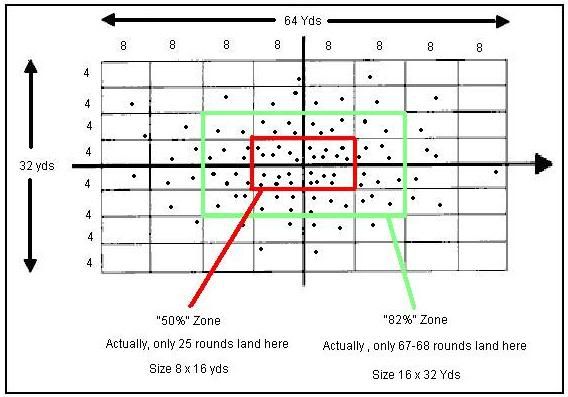
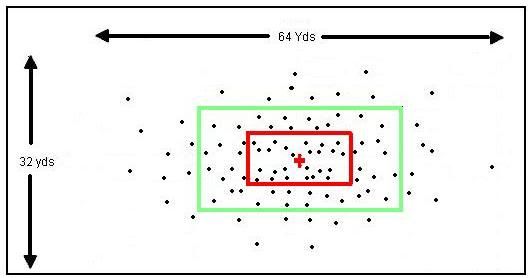
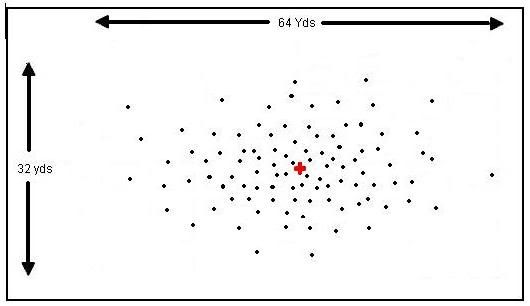

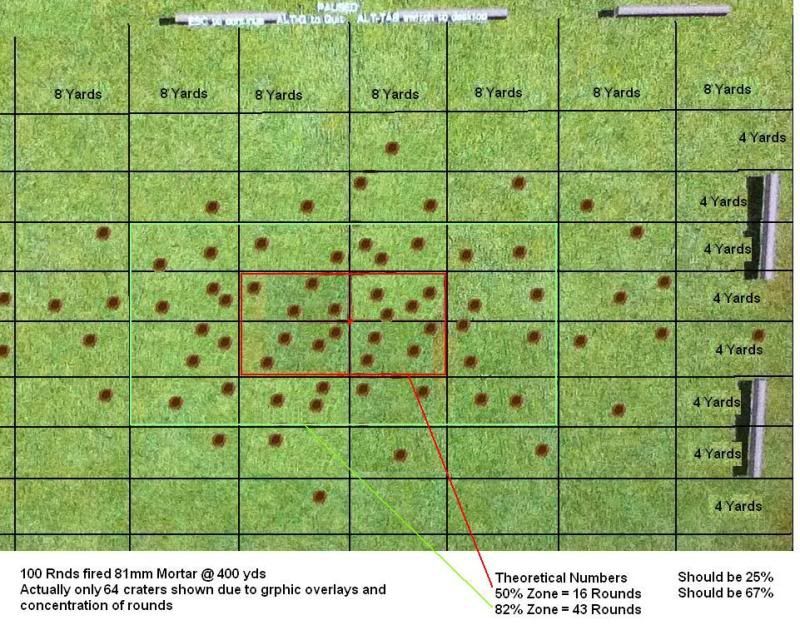

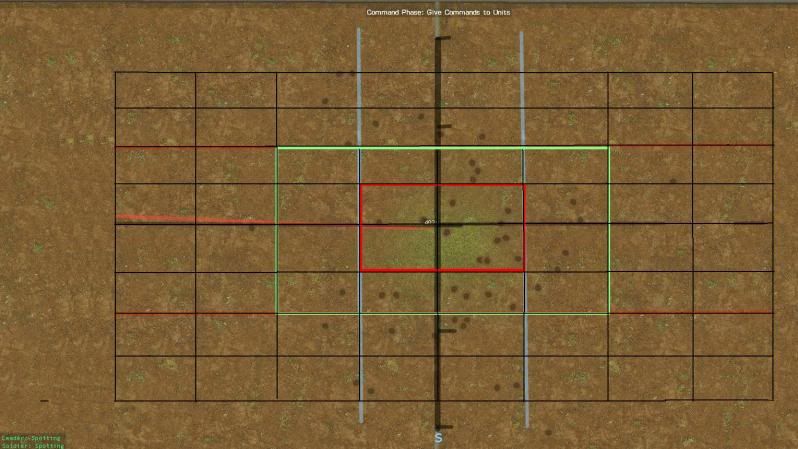
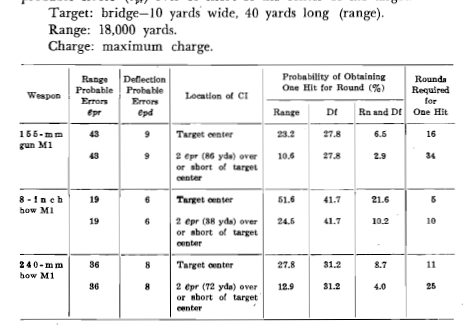
Still disliking Artillery
in Combat Mission Fortress Italy
Posted
Hi there,
Hands down, the best sight on British/Commonwealth artillery anywhere.... For those that really want to know how it worked......
http://nigelef.tripod.com/
Cheers,
Rob